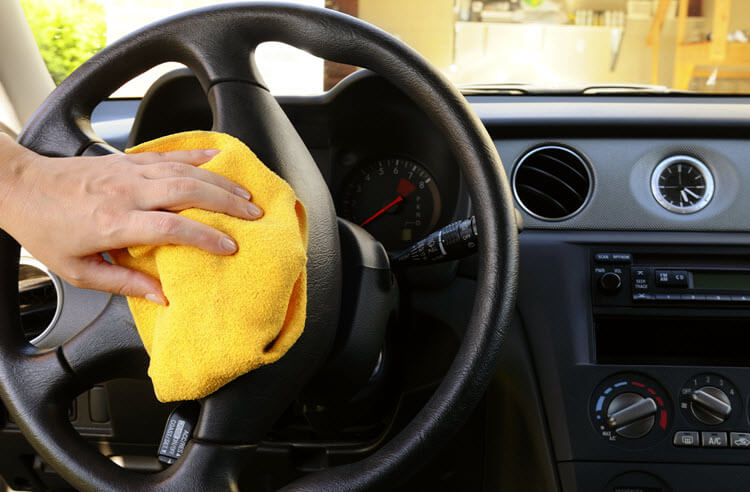If you’re looking to put your used car on the market, you’ll want to make sure your vehicle stands out to potential buyers. You only get one chance at a great first impression and sometimes the tiniest detail can cause the sale to fall through.
Fix what is necessary
If you’ve been putting off making small repairs to your vehicle, now is the time to invest a little money. Replace broken taillights, old wipers, burnt out interior lights and fill in windshield chips. These little flaws could make the buyer question how well you took care of the vehicle in much bigger ways.
Visit your mechanic
It’s a good idea to take your car to a mechanic for a quick inspection before you hang up the “For Sale” sign. He or she will be able to tell you if there are any issues that require your attention. If your buyer chooses to pay for their own pre-purchase inspection, then you'll likely already know what the buyer's mechanic will find.
If your mechanic does find serious problems, then you’ll want to weigh out the cost and benefits of fixing this – will it help you make the sale or does it make more sense to sell the vehicle as is? If you choose not to fix it, get an estimate from the mechanic so you can let the potential buyer know how much money they’ll need to put into the car, and consider this amount when you set your selling price. The same applies to any damage you have on the outside of the car and the body work required to fix it.
You can also ask your mechanic to give the car a quick tune-up. Get them to check all your fluids and filters (oil, transmission fluid, antifreeze/coolant, radiator coolant, brake fluid, windshield washer fluid and power steering fluid) to see if they need to be changed or topped up. Other areas to check include your brakes, any hoses or belts under the hood and your tire pressure.
Compile your records
Interested car shoppers will want to know how well the vehicle was maintained and serviced while it was under your ownership. Gather together any service or maintenance records you have so they can easily be presented whenever someone asks to see them. If you’ve been the one doing the regular oil changes and tune-ups, let them know how often you serviced the vehicle and what type of oil you used.
You should also put together notes on how you used the vehicle. The buyer will want to know what type of driving the car went through (ie. highway versus city) and how much mileage was put on the car annually. It will also help to have the owner’s manual handy along with extra keys and any other documents related to the car.
Scrub the outside and the inside
Take your vehicle to the car wash and give the exterior a deep clean. Don’t leave any area untouched — scrub the wheel wells and get under the door handles. Use an engine cleaner or degreaser to clean things up under the hood too.
Grab a vacuum and scour the inside. Get under and in between the seats, clean out the cupholders and the glove box. Wipe around all the knobs, switches and the gearshift, and give the dashboard a good wash. Don’t forget to clean all the windows on the inside as well. If you don’t have time to give the vehicle a good long clean, you can take your car with a professional detailer so they can get the job done.
Eliminate any warning signs
Pay attention to the lights that pop-up on your dashboard when you start your car. Did you forget to reset your oil change indicator or does your ‘check engine’ light always come on? Talk to your mechanic to see how you can resolve a warning light because this could be an immediate red flag for a shopper.
Give it a fresh scent
You might not notice a smell, but a lingering odour in your car could turn off a prospective buyer. Avoid the traditional tree-shaped car freshener, but consider using an odour eliminator or a light, fresh scent to give your car a pleasant new aroma.
Don’t forget the little extras
Think like a buyer and go out of your way to make examining your car simple and easy. Dig out the backseat seatbelts from between the seats and move the driver and passenger seat position back so it’s easy to get in and out of the vehicle. Lubricate the door and trunk hinges to quiet that annoying creak. Get rid of any window or bumper stickers or personal touches you’ve added to the car.
Show your CARFAX Canada report
If your car is parked and for sale where the public can see it, post your CARFAX Canada report in the window so interested buyers can see what type of history the car has. The report will let shoppers know that you’re an open and honest seller who is willing to give them all the details in order to ensure a great used car buying transaction.
You should know that it could take more than a few weeks to sell your car. If you’re driving it while you’re trying to sell it, then keep up on regular maintenance and don’t let crumbs or dirt pile up. Following these tips however, will help ensure you do all you can to sell your vehicle quickly, for the right price, and with a great transaction experience for both you and the buyer.




